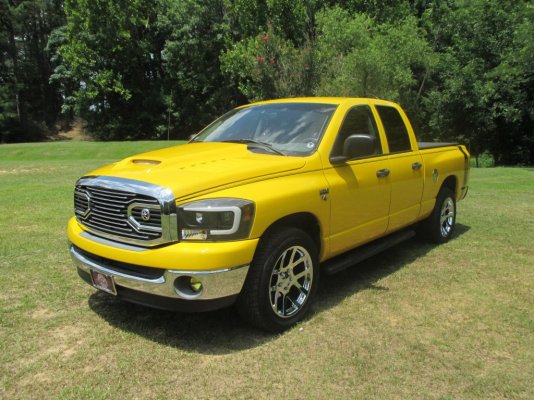dafish
Junior Member
- Joined
- Nov 20, 2023
- Posts
- 18
- Reaction score
- 9
- Location
- Illinois
- Ram Year
- 25 Ramcharger & '01 Dak
- Engine
- 3.6+ 4.7
As the title says...
Retired Technology Analyst. Meaning I speak geek and engineering (badly). I've been towing boats, bikes, trailers full of sleds, ATV's, and SxS's all my life, have more time than I care to think about in everything from Rangers to F-350 powerstrokes. My wife has a Tesla Model Y-LR, our home is solar and creates more power then my house needs to, light, heat and cool the home as well as charge the Tesla.
I recently sold my F-150 Ecoboost to my son, sill have an old Dakota I use for towing a single sled or my bike ('15 vmax) around. Until Ford canceled, or maybe delayed, the '25 Ranger PHEV I was going to buy that, then I came with within a whisker of buying a PowerBoost. But nah, too many Ford service problems going on. I've also decided to add an RV to the toy list, so there went mid-size anyway.
My opinion of course, but I believe I have a pretty good handle on renewables, EV's, PHEV's, towing, and etc.. They could still screw up the to-be Ramcharger, but it's a pretty good start, and a pretty creative blend of off the shelf and their emerging REV.
Retired Technology Analyst. Meaning I speak geek and engineering (badly). I've been towing boats, bikes, trailers full of sleds, ATV's, and SxS's all my life, have more time than I care to think about in everything from Rangers to F-350 powerstrokes. My wife has a Tesla Model Y-LR, our home is solar and creates more power then my house needs to, light, heat and cool the home as well as charge the Tesla.
I recently sold my F-150 Ecoboost to my son, sill have an old Dakota I use for towing a single sled or my bike ('15 vmax) around. Until Ford canceled, or maybe delayed, the '25 Ranger PHEV I was going to buy that, then I came with within a whisker of buying a PowerBoost. But nah, too many Ford service problems going on. I've also decided to add an RV to the toy list, so there went mid-size anyway.
My opinion of course, but I believe I have a pretty good handle on renewables, EV's, PHEV's, towing, and etc.. They could still screw up the to-be Ramcharger, but it's a pretty good start, and a pretty creative blend of off the shelf and their emerging REV.
Last edited:




